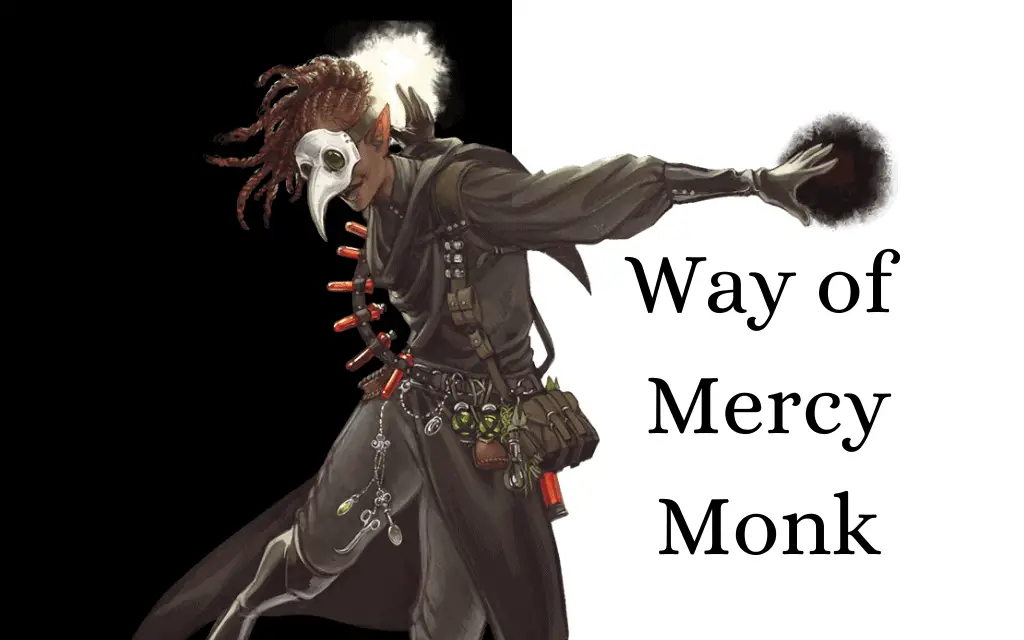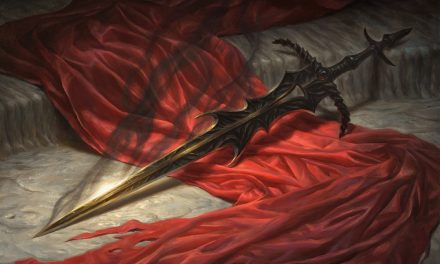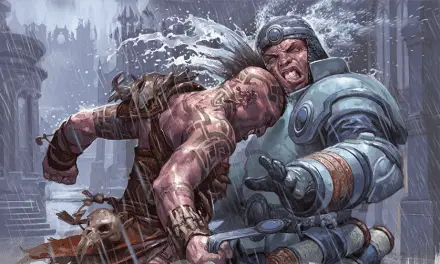The Way of Mercy Monk is one of the most interesting Monk subclasses in D&D 5e. More than any other Monastic Tradition, the Way of Mercy deviates from the typical Monk themes.
Existing as a force of balance, these Monks are capable of healing as well as harm. They are healers, physicians, and (when magic and medicine aren’t enough) granters of a swift and merciful end.
With their identities concealed behind masks and dark cloaks, Mercy Monks wander the land. With the gift of being able to manipulate the life force of others as well as their own, these doctors take a pragmatic approach to the world around them.
So, if you’re ready to practice some medicine, let’s get right into it!
This is the full subclass guide to the Way of Mercy Monk in D&D 5e!
What is the Way Of Mercy Monk in D&D 5e
Unlike the typical Monk, the Way of Mercy Monks are healers and wandering physicians first and foremost.
These characters commonly travel around providing healing to the poor and downtrodden. If someone’s condition is beyond the ability of magic or medicine to treat, the Way of Mercy Monk is able to offer a swift end to the person’s suffering.
To some, Mercy Monks might be viewed as healers deserving of celebration and blessing for their work.
To others, the arrival of Mercy Monks might signify trying times ahead. After all, these Monks are most commonly found in the areas that most require their steady hand.
Such areas might be afflicted with plague and disease or be suffering from the ravages of war. If the commoners see Mercy Monks but no signs of plague or war, it’s natural that some might fear that these good doctors are getting ahead of the problem.
Way of Mercy Monks understand that idealism has no place in their line of work. They are focused, pragmatic, and would prefer an uncomfortable truth to a comfortable lie.
Their line of work may be too macabre for some tastes, but they do serve an important purpose.
The Way of Mercy Monk was introduced in Tasha’s Cauldron of Everything alongside the Astral Self Monk.
Role in the Party
With one hand, the Way of Mercy Monk grants life. They are gifted healers who are able to provide some much-needed healing on the party’s frontlines.
With their other hand, the Way of Mercy Monk can take life away. Even beyond their formidable martial prowess, the Mercy Monk is able to alter their enemies’ life force to cause extra harm.
What results is a character that keeps the best aspects of the Monk class (dishing out tons of lightning-fast attacks and staying mobile) but lets them take more of a hyper-mobile supporting role for the party.
The Mercy Monk isn’t going to be out-healing classes like the Life Cleric or Circle of Dreams Druid, but don’t discount them just yet!
Being able to mix healing in with their typical barrage of attacks means the Mercy Monk is able to effortlessly wear multiple hats. Not only are they providing healing to nearby allies, but they’re also still giving their enemies a beatdown they won’t soon forget!
Also Check Out: The Complete Monk Class Guide for D&D 5e!
Way Of Mercy Monk Features 5e
Like all Monks, the Way of Mercy Monk relies heavily on having solid Dexterity and Wisdom scores.
In most cases, I’d ultimately give priority to Dexterity between the two, but the Mercy Monk especially needs to focus on their Wisdom score.
Additionally, be extra mindful of your ki points. While this is good advice for any Monk, the Way of Mercy Monk is especially prone to burning through their ki too fast.
Keep your mind calm and your hand steady, Doctor!
With that disclaimer out of the way, let’s move into dissecting the specific features you gain from the Way of Mercy.
Implements of Mercy (Level 3)
The first of three features that the Way of Mercy Monk gains at level 3 gives you some extra proficiencies as well as some extra flavor.
You gain proficiency in the Insight and Medicine skills, and you gain proficiency with the herbalism kit.
You also gain a special mask which you often wear when using the features of this subclass. Determine its appearance or generate it randomly by rolling on the Merciful Mask table.
As a Monk, you should already have a great Wisdom score. Gaining proficiency in Insight and Medicine (both are Wisdom skills) is a pretty sizable bonus.
With the Medicine skill, you’re able to diagnose things like poisons or diseases while also being able to heal/stabilize others with the use of a Healer’s Kit.
The Insight skill is great for determining others’ true intentions. You can determine if someone is lying, predict their next move, or get a “gut feeling” of a situation. (It’s a wildly underused skill. Check out my guide to using the Insight skill to see just how it’s used!)
As for your mask, it’s a fun bit of flavor. Monks of the Way of Mercy wear masks in their work as a way of removing emotion from what must be done.
If you’ve ever wanted to play as a Plague Doctor, this is your chance. (Not that you specifically needed a feature to let you wear a mask, but it’s fun to have.)
If you want to add some extra authenticity, you might keep some fragrant herbs in your mask. Much like the Plague Doctors of old, it’s useful for blocking out the smells of death and decay that are so common in your line of work!
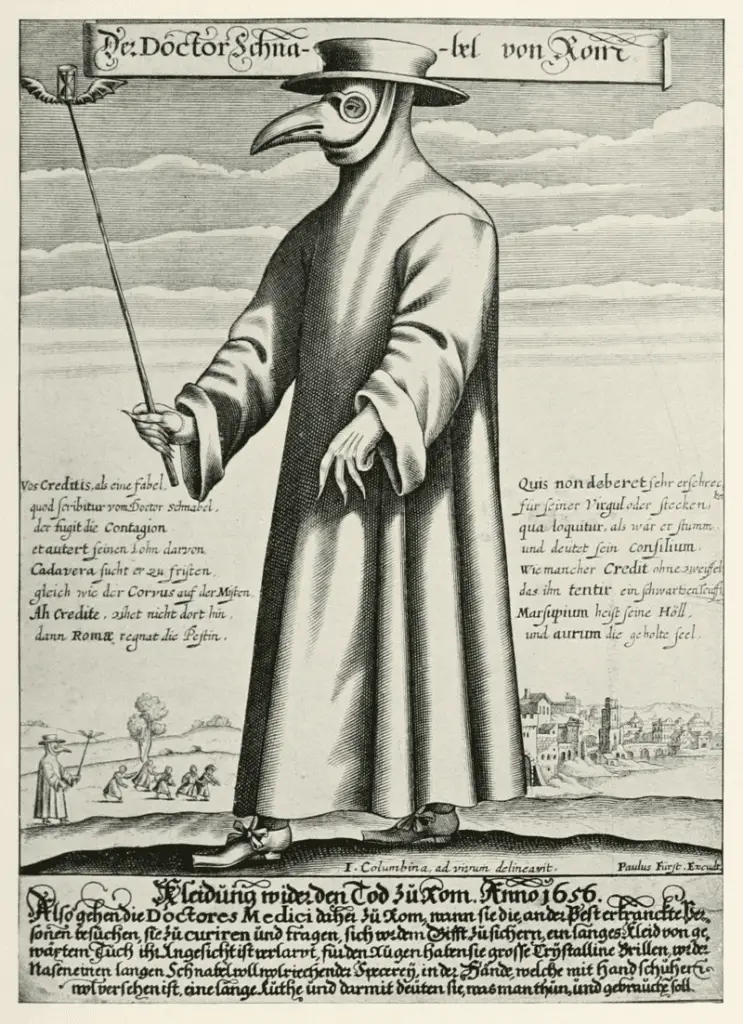
Also Check Out: Using Monk Weapons in D&D 5e
Hand of Healing (Level 3)
Monks’ fists are famously lethal weapons, but the Way of Mercy Monk proves that their hands can also give life.
With your Hand of Healing feature, you’re able to heal others using your ki.
As an action, you can spend 1 ki point to touch a creature and restore a number of hit points equal to a roll of your Martial Arts die + your Wisdom modifier.
When you use your Flurry of Blows, you can replace one of the unarmed strikes with a use of this feature without spending a ki point for the healing.
Like I mentioned earlier, you’re not going to be out-healing the party’s Cleric any time soon. However, being able to pump out extra healing on the front lines can very quickly make a difference.
If your ally drops to zero hit points, being able to bring them back up while continuing with your Flurry of Blows is great.
Additionally, keep in mind that the Way of Mercy Monk can heal themselves with this feature.
Physician, heal thyself!
As you level up, your Martial Arts die increases which means your healing with this feature will be more potent.
Generally, you will want to line things up so that you’re using this feature with your Flurry of Blows. Giving up your action to use this is a steep cost for Monks, but splitting the difference with your Flurry of Blows is very efficient. It costs the same ki point but lets you heal your friend and smack your enemy in the same bonus action!
Hand of Harm (Level 3)
While one of the Mercy Monk’s hands giveth hit points, the other taketh them away. That same talent for manipulating ki to heal can also be used to inflict painful necrotic damage!
When you hit a creature with an unarmed strike, you can spend 1 ki point to deal extra necrotic damage equal to one roll of your Martial Arts die + your Wisdom modifier.
You can use this feature only once per turn.
Once per turn being able to pump another roll of your Martial Arts die + Wisdom modifier worth of damage into an opponent is great. Even better, this mixes in wonderfully with the Monk’s action economy.
Just be especially mindful of your ki though. This is one of those features that it can become very easy to overuse and find yourself all out of ki points.
Hand of Harm makes for a powerful finisher when you need that extra bit of damage to drop an enemy.
Use your best judgement during combat. If you know that you’re going to get a short rest after combat, you can be more aggressive with this feature. Otherwise, save it for when you really need that extra damage boost to finish off an enemy.
Related: Using the Monk’s Stunning Strike Feature
Physician’s Touch (Level 6)
At level 6, Physician’s Touch gives you extra buffs to your Hand of Healing and Hand of Harm features.
When you use Hand of Healing on a creature, you can also end one disease or one of the following conditions affecting the creature: blinded, deafened, paralyzed, poisoned, or stunned.
Your Hand of Healing now has the added bonus of a built-in Lesser Restoration. Actually, it’s even better than Lesser Restoration since it also removes the Stunned condition!
As before, this is especially useful if you’re working it into your Flurry of Blows. For one ki point, you’re using your bonus action to heal your ally and remove a condition from them while still getting an extra hit in on the enemy!
Not bad at all!
When you use Hand of Harm on a creature, you can subject that creature to the poisoned condition until the end of your next turn.
Of course, playing into the duality theme of the Way of Mercy, your Hand of Harm gets more potent too!
Note that there’s not a save against the poisoned condition that your Hand of Harm afflicts on the enemy. If you hit them with your Hand of Harm, they take the extra necrotic damage and are poisoned.
Keep in mind that being poisoned means that they have disadvantage on their attack rolls and ability checks. It may only last until the end of your next turn, but they’re going to have a hard time doing much of anything between now and then!
If you’re going against an enemy that hits especially hard, giving them disadvantage on their attacks can make a huge difference!
Who needs a Hippocratic Oath anyway, right?!
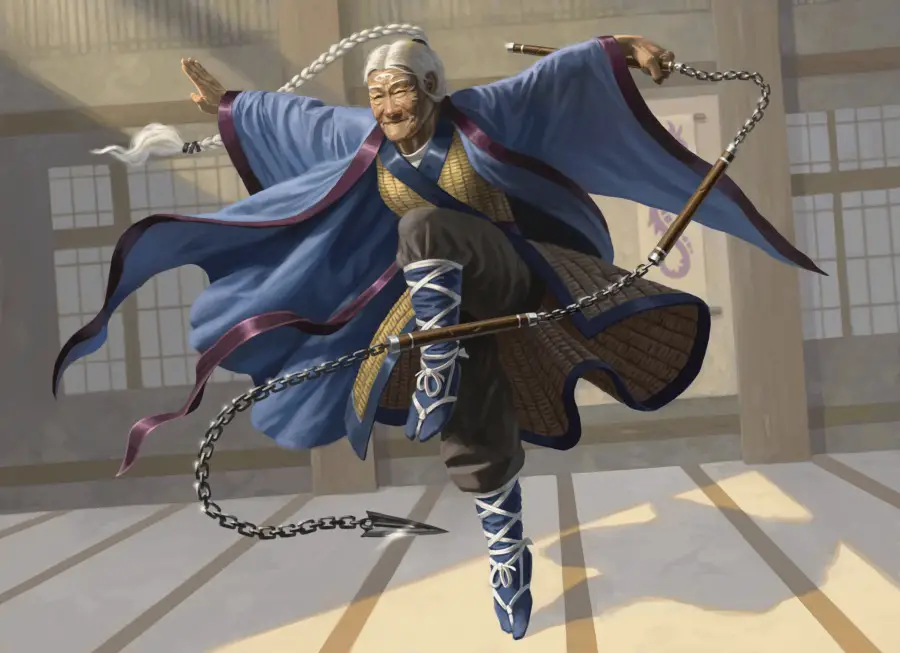
Flurry of Healing and Harm (Level 11)
Flurry of Blows is arguably the most important Monk feature. It’s often the key to getting the most out of your turn.
Thankfully, it gets a nice buff when you hit level 11 as a Mercy Monk!
When you use Flurry of Blows, you can now replace each of the unarmed strikes with a use of your Hand of Healing without spending ki points for the healing.
Especially at level 11, the Mercy Monk is not out-healing Clerics and Druids. While even a small amount of hit points can make the difference between victory and defeat, your Hand of Healing is best used for picking up unconscious allies or strictly supplementary purposes.
That said, you probably aren’t getting too much value out of this upgrade to your Hand of Healing. Unless you’re in situations where you have two allies that are unconscious or hindered by some condition, you won’t use this too much.
However, it’s great to have in your back pocket in exactly those clutch moments!
But your Hand of Harm is also getting buffed…
In addition, when you make an unarmed strike with Flurry of Blows, you can use Hand of Harm with that strike without spending the ki point for Hand of Harm. You can still use Hand of Harm only once per turn.
Saving ki is always a great thing! Now you’re getting a free use of your Hand of Harm each turn when you use your Flurry of Blows!
It might sound like a small buff but managing your ki is one of the hardest things about playing a Monk. Getting in the extra damage PLUS the poisoned condition without needing to spend more ki each turn is wonderful.
Related: The Monk’s Flurry of Blows Explained
Hand of Ultimate Mercy (Level 17)
With your capstone feature at level 17, the practices of the Way of Mercy have served you well. As you’ve learned to harness the life energy of yourself and others, you can now bring the dead back to life.
As an action, you touch the corpse of a creature that died within the past 24 hours and expend 5 ki points. The creature then returns to life, regaining a number of hit points equal to 4d10 + your Wisdom modifier.
If the creature died while subject to any of the following conditions, it revives with them removed: blinded, deafened, paralyzed, poisoned, and stunned.
Once you use this feature, you can’t use it against until you finish a long rest.
Here’s the thing…
Your party has likely had a few (at least) ways to resurrect others for quite some time now. However, this is usually pretty expensive and requires specific components.
For 5 ki, you can just bring them back to life. As long as it’s within 24 hours of the person’s death, you’ve got a free resurrection.
Keep in mind that you get your ki back on a short rest, as well!
If you just got out of combat, take a short rest then revive your ally. If you expect that you’ll be going into combat soon, revive the person then recover your ki with a short rest.
This may not be the flashiest capstone feature. In fact, it’s one that you hope you never actually need to use.
But when you do need it, you’ll be very glad you have it!
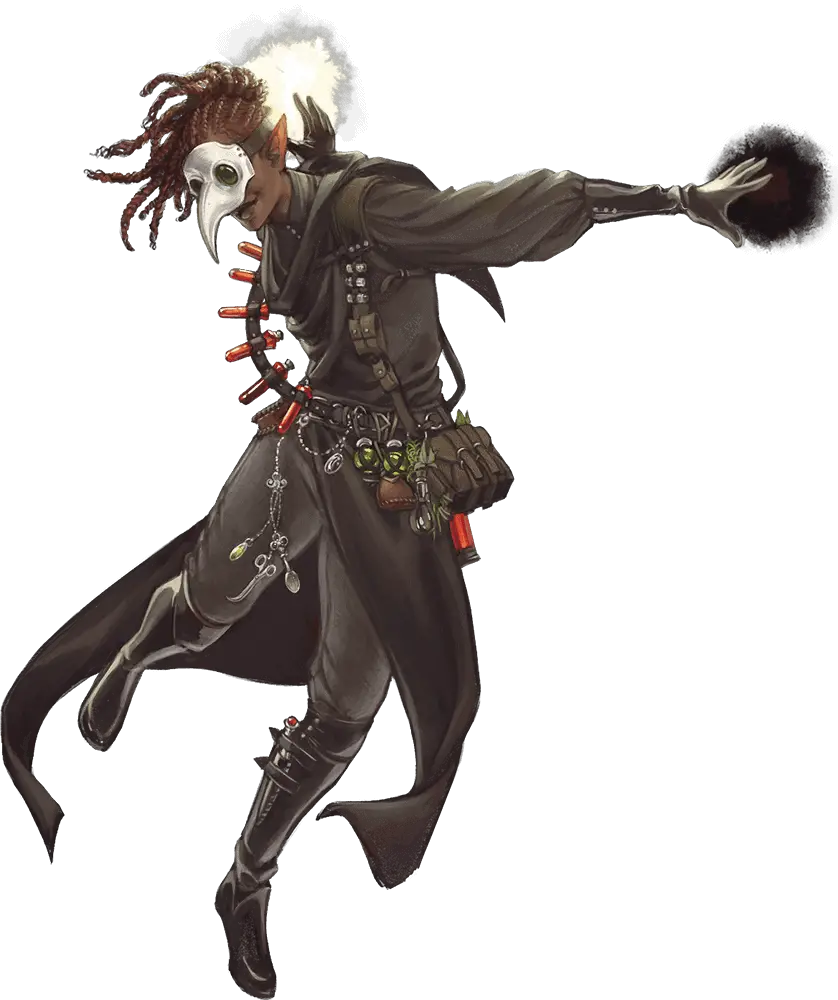
Connections
Because Monks of the Way of Mercy are wanderers by nature, it’s easy to work them into a campaign.
The party’s adventure could be a very good way for the Mercy Monk to continue their travels. As the party travels into new towns, the Mercy Monk might offer their talents as a healer to the community.
A campaign that that features a widespread disease like the Bubonic Plague is especially thematic for the Way of Mercy Monk.
Whether this outbreak is a major part of the campaign or just an important element of the world, it gives the Mercy Monk a strong connection to the story. They offer healing (or at least an end to suffering) to those they encounter while pursuing a cure.
It’s rare that I’m not DM-ing, but I very nearly played a Way of Mercy Monk myself in the game that I’m not the DM. (I ended up going with a Drunken Master Monk.)
I’ve thought it might be interesting to turn such a character’s reasons for doing what they do inwards. They wear a mask to hide the fact that they themselves are afflicted with some terrible disease. Through treating and healing others, the character hopes to find a cure for their own condition.
Is the Way Of Mercy Monk Good?
The Way of Mercy Monk is definitely a unique take on the class, but it’s far from bad!
For what the Way of Mercy Monk aims to do, they’re fantastic. The biggest issue lies less with the subclass itself and more with the player’s expectations.
The Mercy Monk is capable of healing, but they shouldn’t be viewed as the party’s “healer.”
They put out a respectable amount of damage, but don’t dominate the battlefield in the same way as, say, an Open Hand Monk does.
Ultimately, the Way of Mercy Monk is true to the Monk’s typical role as a skirmisher. You want to get right up where the action is, unleash a flurry of attacks, then use your mobility to keep control of the battlefield.
The difference is that now you’re able to mix in some extra front-line support. You’re mobile enough to quickly position yourself where you need to be. The ideal situation for the Mercy Monk is right next to an ally and at least one enemy.
Spend equal effort supporting your allies and damaging enemies and you’ll be just fine. If an ally goes down, you should have no trouble getting to them and quickly picking them back up!
But how does the Mercy Monk stack up against the other Monastic Traditions? See for yourself in my full ranking of every Monk subclass in D&D 5e!
Conclusion – The Way of Mercy Monk in D&D 5e
Adding healing utility to the Monk class makes for an interesting experience.
Between being able to function as an off-healer (while still smacking enemies silly) and a heaping mountain of flavor, the Way of Mercy Monk definitely stands out among its peers.
But what can I say? I’m a sucker for a strong theme in a class!
Have you played as a Way of Mercy Monk or have a cool concept for one? Let’s chat in the comments!
Want all the latest player guides, DM tips, news, reviews, and more for D&D 5e? Sign up for the Tabletop Joab newsletter below!
You can also follow me on Facebook and Twitter.
If you found this article helpful and want to support the site, you can buy me a coffee here! (It’s not expected, but very appreciated!)

